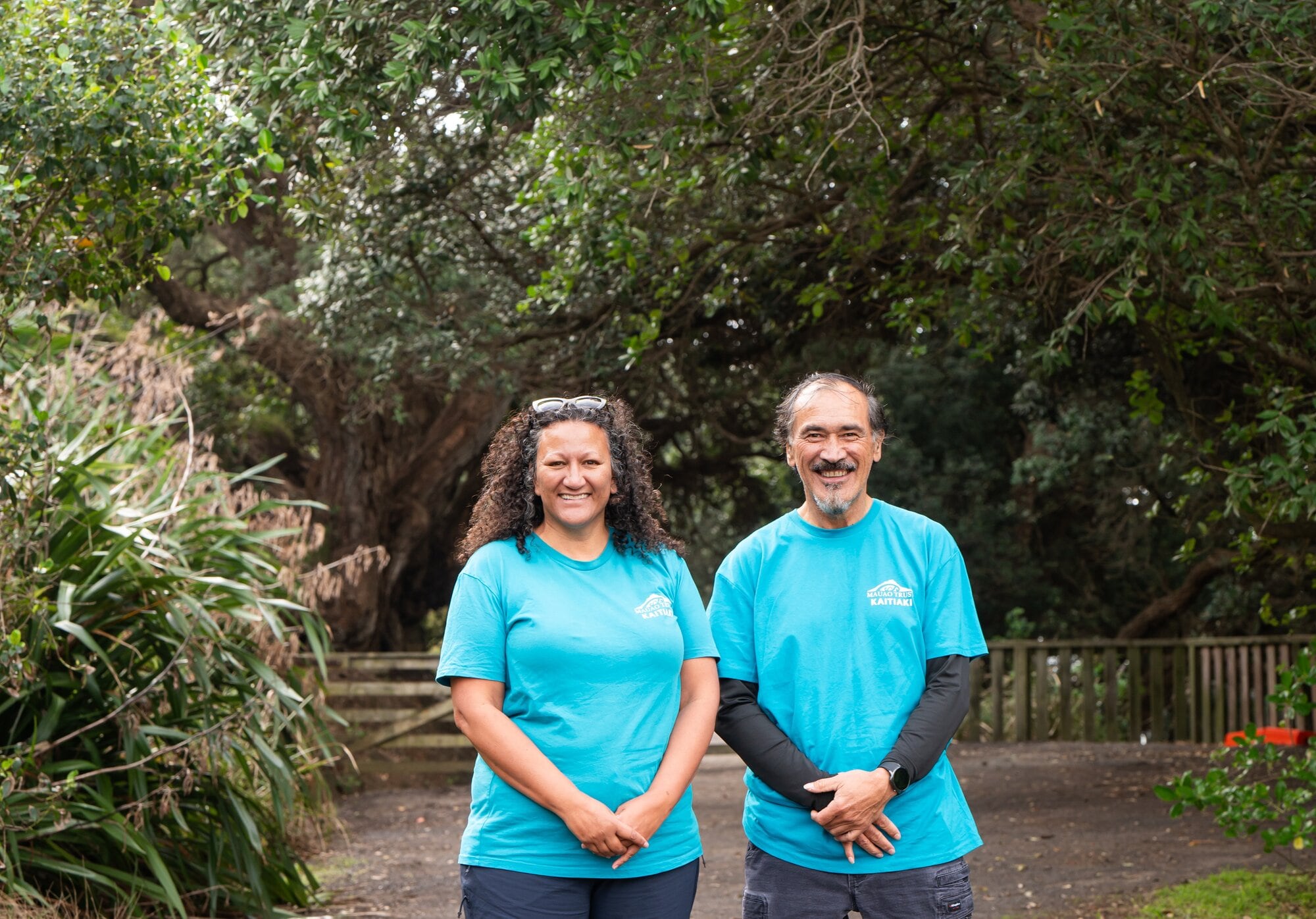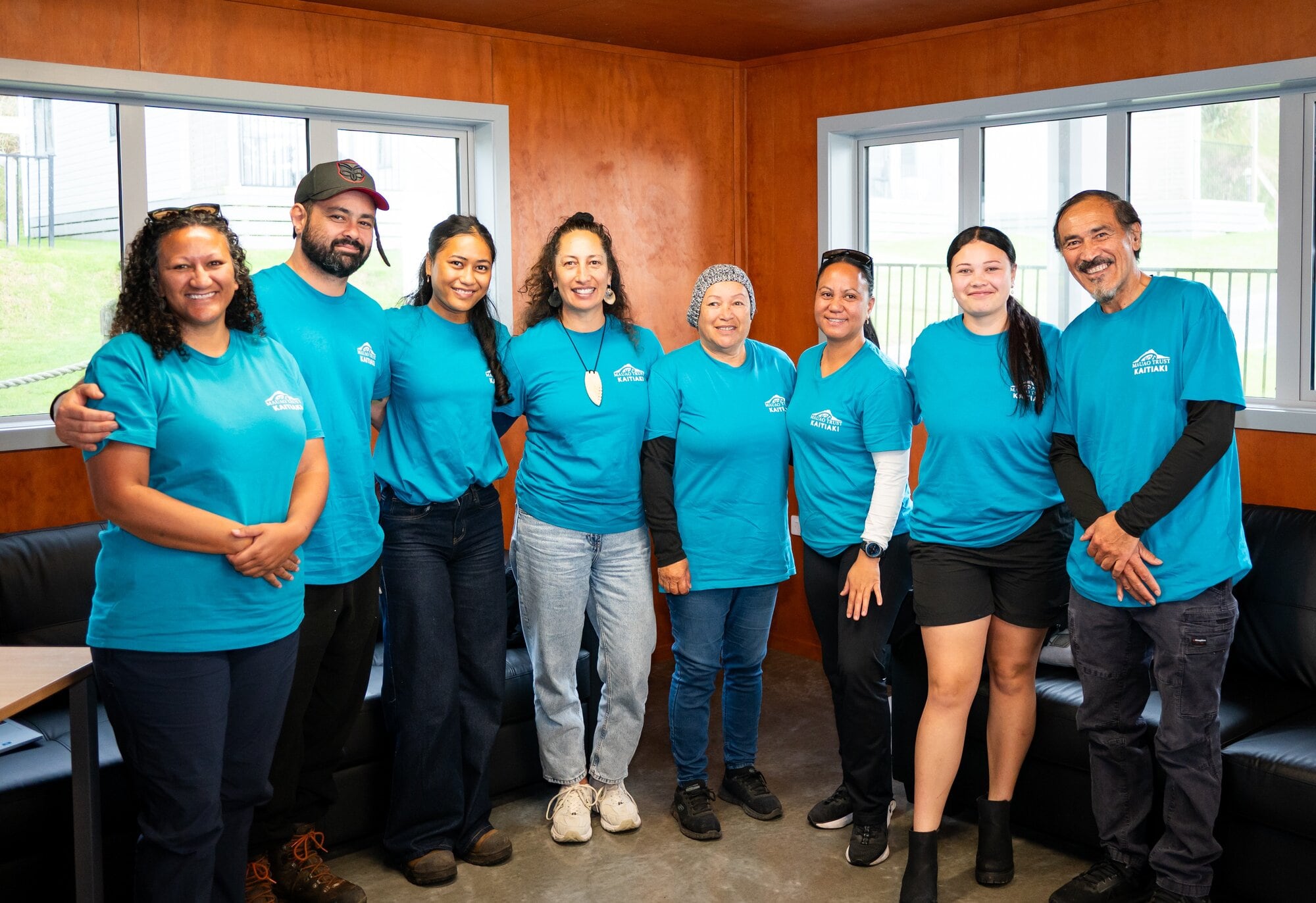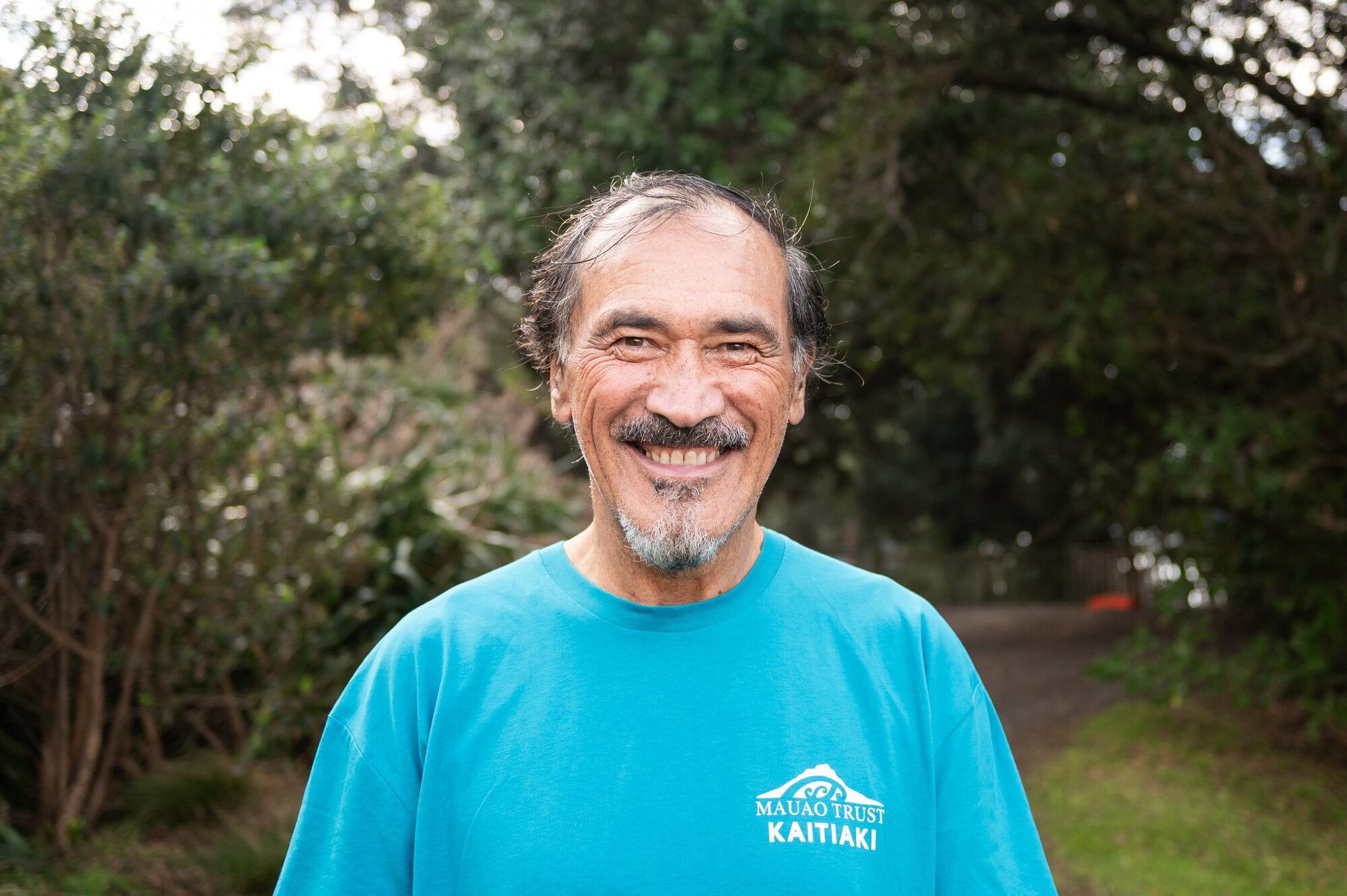Teams working to prevent the spread of myrtle rust detected on Mauao in Mount Maunganui are warning people to stay away from pōhutukawa trees on the mountain.
Myrtle rust first appeared in New Zealand in 2017, raising concerns it could threaten species such as mānuka, feijoa, and kānuka — all members of the myrtle family, facilitator of the Mauao Trust, kaitiaki Kawana Warahi, said.
These species, which Warahi described as “money trees”, have so far escaped damage from myrtle rust. But other trees, like the pōhutukawa on Mauao, and ramarama, in Rotorua, have been hit hard.
“Rotorua has already lost the ramarama,” Warahi said.
He was leading a team of seven kaitiaki (guardians) investigating the spread of the aggressive plant disease.

Mauao Trust project manager Porina McLeod and Kawana Warahi. Photo/ Brydie Thompson
All seven kaitiaki have ancestral ties to Mauao and a deep understanding of the environment, Mauao Trust project manager Porina McLeod said.
Myrtle rust affects pōhutukawa trees just as they begin to produce a fresh flush of growth, McLeod said.
“Eventually, the tree dies off because it’s not growing any new shoots.”
Myrtle rust typically appears as a yellowish to orange, furry-like growth on the underside of leaves.
“The impact of myrtle is quite devastating,” McLeod said. “You get fully stripped and dead trees, so we want to prevent that.”
The pathogen is most active in summer and tends to subside in winter, she said.
“November is when it starts coming back.
“It then sticks around for a few months and dwindles off as it gets cooler.”
There are currently no conclusive methods to eliminate the disease.
While herbicides may suppress it temporarily, McLeod said it remains unclear whether they actually eradicate the pathogen.
“There is still research to be done on our part around that.”
One proposed mitigation measure is a seed bank, where pōhutukawa trees would be cloned from cuttings, rather than growing from seed, which takes decades, said McLeod.
Mauao is jointly administered by the Mauao Trust and Tauranga City Council, and the project is funded by Genomics Aotearoa — a national research initiative supporting the use of advanced genomics and bioinformatics in health, the environment, and primary industries.
Three varieties of pōhutukawa grow on Mauao: Pītau pōhutukawa, Kermadec pōhutukawa, and a hybrid formed from the merging of native and introduced types.
The Kermadec variety originates from the Kermadec Islands, more than 1000km northeast of Aotearoa.
Following a 2016 fire on Mauao, which destroyed 4000sq m of vegetation, a large number of Kermadec pōhutukawa were planted.
Now the northeast side of Mauao has been affected by myrtle rust, with the pathogen blowing across from Australia, McLeod said.
“A whole lot of planting was done, and nobody knew that there were different types.” Taranaki iwi consider the Kermadec variety a taonga species, brought over by their ancestors on waka centuries ago, she said.
Hybridisation — the mixing of two different species to produce a new form with combined traits — contributes to the decline of native eucalyptus in Australia, Warahi said.
To identify the pōhutukawa on Mauao, Warahi analysed 4000 leaves from 200 trees to determine key traits.

The team of seven kaitiaki, all with ancestral ties to Mauao. Photo/ Brydie Thompson.
This enabled the kaitiaki to begin identifying individual trees across the maunga.
His team then employed artificial intelligence, using satellite imagery and deep learning to map the canopy.
“We managed to get to around 580 pōhutukawa trees,” he said.
Hybrids pose a threat to native species and could eventually replace them, Warahi warned.
“Your old trees would die out.”

